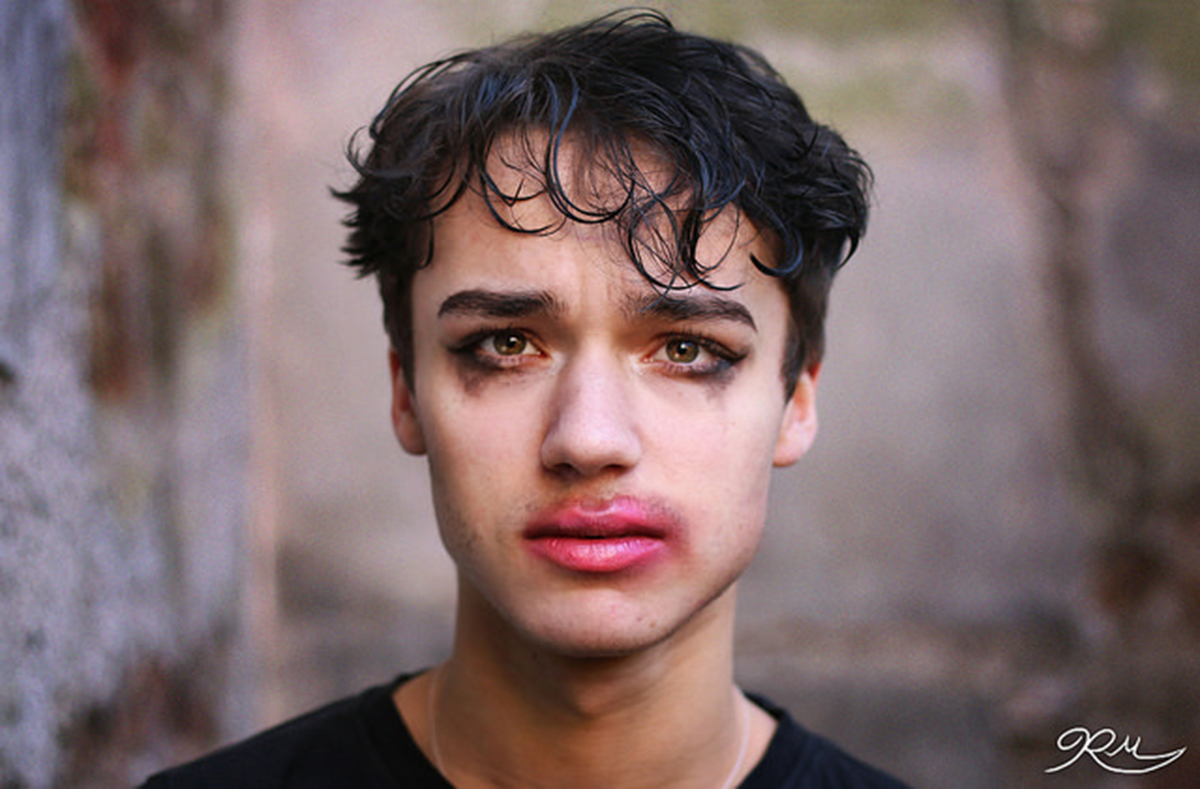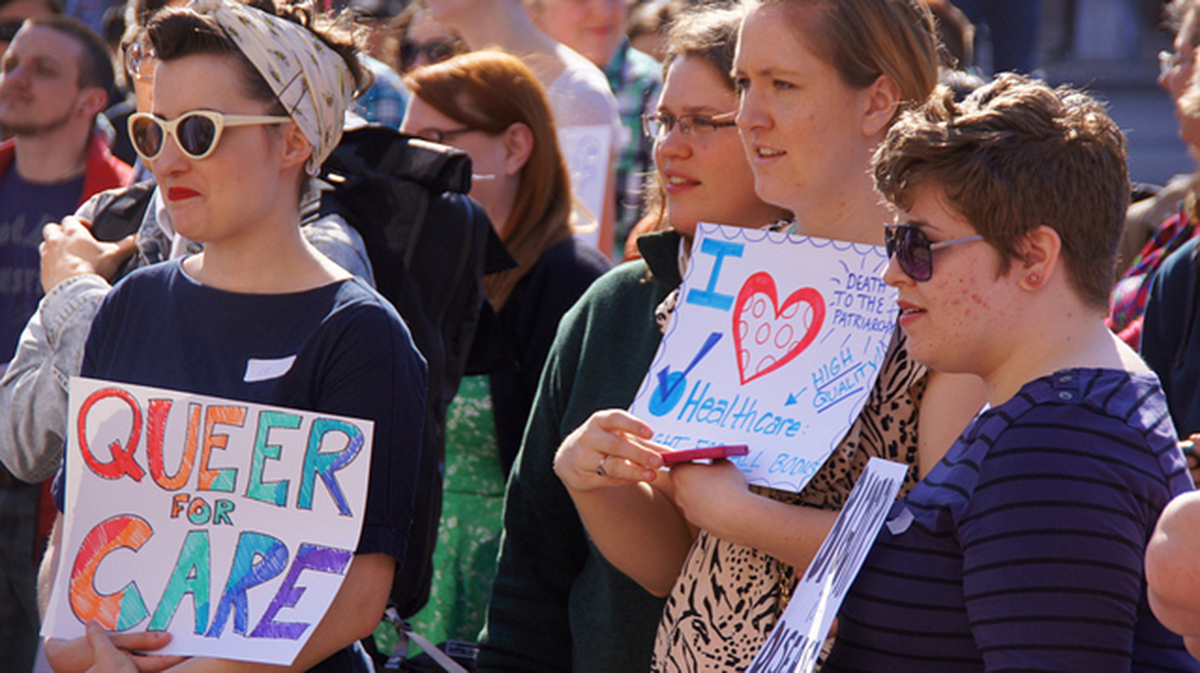There’s increasing acceptance of binary transgender people in the media. That might not be much consolation to closeted trans people in conservative small towns, but it’s an encouraging sign for trans people as a group. However, there's a real charge to face in the idea that binary trans acceptance could be subtly reinforcing gender binaries.
If we're accepting binary trans identities are we reinforcing the gender binary by doing so? Where does that leave butches, fembois, hard femmes, cross dressers and genderqueer and genderfluid folks?

One group who stand to suffer from this are non-gender conforming gay men and lesbians. It’s quite possible to have a highly feminine gender presentation — powered by fairy dust, complete with glitter and sparkles — and identify as a man. But for young people who are learning and dealing with their gender and sexuality, how many feminine gay men will be told they are transgender, or believe they are, because of their gender expression? It’s the same for lesbians who might identify as female quite strongly but also be very masculine in gender expression. We hear less about female-to-male trans people than male-to-female, but how many teen butches will now face the erasure of their identities not from conservatives who don’t think lesbianism exists but from over-enthusiastic trans activists?
Another group at risk from a simplistic embrace of binary trans identities is nonbinary trans people. Nonbinary trans identities, including genderqueer, genderfluid and agender people, come under dismissive and vituperative fire from binary trans people. The same make-up-your-mind, your-identity-doesn’t-really-exist tactics that trans people suffer from cis lesbian, bisexuals and gays — and that LGB people suffer from straight society — is applied to a new minority within a minority.
READ Myths About Transgender Identities
I don’t in any way mean to suggest that this is somehow the fault of all trans men or women. It’s not your fault unless you’re actively doing it. What I’m talking about is the discourse in the media and the parallel discourse in medicine, things that form the picture of the world you’ll be offered if you’re not able to make one of your own.
Suppose a little girl (so her parents believe) show up to a psychologist’s office with her parents, worried about their daughter, Jacqueline. Jacqueline prefers to be called Jack. She wears big brown work boots with the laces undone, cargo pants, baggy T-shirts with skulls on and a gas station shirt (yeah, I grew up in the 90s. I don’t know what the kids wear. If you do, feel free to perform your own mental substitutions). Her hair is cut short. Her facial expressions skew masculine: heavy on anger and disgust, demonstrative when it comes to her own opinion, but not so much when it comes to responding to someone else’s. Here’s my question: What’s Jack?
We're At Risk Of Replacing One Simplistic "Identity Map" With Another
Actually, I think that’s already the wrong question. Framing it as “who’s Jack” gets you out of a lot of pitfalls besides losing some undesirable baggage. But Jack could be female-to-male transgender. Or going through a phase. Or a tomboy. Or a butch lesbian. Or a straight (or bi!) girl who prefers a butchy expression and appearance. Or non-binary trans. In the past she would probably have been offered reparative therapy to help her be more “like a girl” (it should have escaped no-one’s attention that Jack is “like a girl,” whether “she” is one or not).

My point here is that we shouldn’t allow acceptance of binary trans identities to reinforce the gender binary. It’s OK to be trans, but not because then at least you’re not gay, or a dyke, or some unfamiliar, problematic identity whose very existence is threatening to comfortable views of a (nonexistent) gender binary. The biggest danger in acceptance of binary trans identities is that trans people wind up being used to institutionalize and medicalize binary gender identity and gender expression — something gay people and lesbians, especially gay men, have been fighting against for centuries.
In the nineteenth century, the chosen solution for homosexuality stopped being judicial murder or the casting out of the Evil One. In its place was instituted a medical approach aimed at… well, pretty much aimed at casting out the Evil One, only this time the demon in question was “effeminacy.” Rock Hudson notwithstanding, gay men were treated as though they mainly suffered from too little manliness brought on by low testosterone. (I’ve always thought that was Clark Gable’s problem.) Hormone treatments and even electric shocks were used to “de-gay” gay men. One of the most famous examples of this is the story of the mathematician Alan Turing who was driven to insanity and eventually suicide by treatment intended to make him heterosexual. (If you’re wondering where gay women are in this story, they’re nowhere since they officially didn’t exist.)
READ Could My Child Be Transgender? Exploring The Signs And The Future
It needed to be fought in people’s lives, in legislatures, in literature, in the academy and in the medical books, not in hospital wards with injections of hormones to “cure” the problem. Those problems are still with us, along with sometimes sulfurous transphobia. And while the solution for individual trans people is frequently medical transition, it’s not going to work for us as a society to use that as a way not to see just how queer people are — and thereby, just how false are the structures that enforce gender-policed, binary identities.
If you think I've really nailed it or really blown it, want more information or have something to add, get in touch in the comments section below.
- Photo courtesy of Rose Morelli: www.flickr.com/photos/rosemorelli/16256074718/
- Photo courtesy of tedeytan: www.flickr.com/photos/taedc/8604814536/


Your thoughts on this